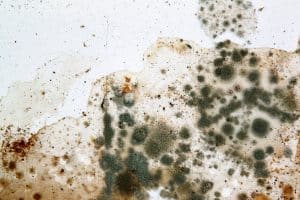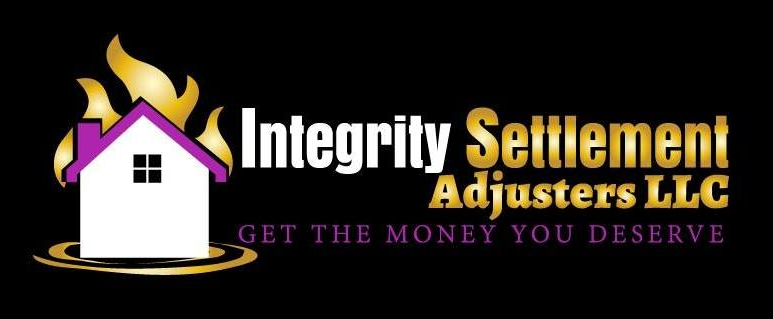 Mold is a ubiquitous fungus that thrives in damp environments, posing a significant threat to human health and the structural integrity of buildings. While many people are aware of the existence of “toxic mold,” the complexities surrounding various mold species and their respective health implications are often misunderstood. In this comprehensive article, we will delve into the different categories of harmful mold, their unique characteristics, and the potential consequences of exposure, equipping you with the knowledge to safeguard your home and well-being.
Mold is a ubiquitous fungus that thrives in damp environments, posing a significant threat to human health and the structural integrity of buildings. While many people are aware of the existence of “toxic mold,” the complexities surrounding various mold species and their respective health implications are often misunderstood. In this comprehensive article, we will delve into the different categories of harmful mold, their unique characteristics, and the potential consequences of exposure, equipping you with the knowledge to safeguard your home and well-being.
Understanding Mold: The Basics
Mold is a type of fungus that reproduces through the release of tiny, airborne spores. These spores can easily enter our homes through open windows, doors, or by clinging to our clothing and pets. Once settled in a moist environment, mold can rapidly proliferate, feeding on organic materials such as wood, paper, or even the drywall in our walls. Mold can be found in a wide range of colors, including green, black, white, yellow, and even pink, each with its own unique properties and potential for harm.
Categorizing Harmful Mold
Mold species can be broadly classified into three main categories based on their potential health effects: allergenic, pathogenic, and toxigenic.
Allergenic Mold
Allergenic molds are those that can trigger allergic reactions in susceptible individuals. These reactions can range from mild, such as sneezing, itching, and nasal congestion, to more severe, such as asthma attacks. Some of the most common allergenic mold genera include Alternaria, Aspergillus, Cladosporium, and Penicillium.
Pathogenic Mold
Pathogenic molds are those that can cause infections, particularly in individuals with compromised immune systems. These molds can lead to a variety of health issues, such as pneumonia, meningitis, and even life-threatening conditions. Examples of pathogenic mold genera include Aspergillus, Cryptococcus, and Histoplasma.
Toxigenic Mold
Toxigenic molds are the most concerning, as they produce harmful chemical byproducts called mycotoxins. These mycotoxins can cause a range of toxic responses in humans, including respiratory problems, neurological issues, and even cancer. Some of the most notorious toxigenic mold genera include Fusarium, Penicillium, Aspergillus, and the infamous Stachybotrys, commonly known as “black mold.”
Exploring Specific Harmful Mold Species
Stachybotrys chartarum (Black Mold)
Stachybotrys chartarum, often referred to as “black mold,” is one of the most well-known and potentially hazardous mold species. This toxigenic mold can produce mycotoxins that can cause severe respiratory problems, including bleeding in the lungs, and has been linked to neurological issues and even infant deaths. Stachybotrys is particularly concerning because it can grow behind walls, under carpets, and in other hidden areas, making it difficult to detect and remove.
Aspergillus
Aspergillus is a genus of mold that includes both allergenic and pathogenic species. Some Aspergillus species, such as Aspergillus fumigatus, can cause invasive aspergillosis, a serious lung infection that can be life-threatening, especially in individuals with weakened immune systems. Other Aspergillus species, like Aspergillus niger and Aspergillus flavus, are known to produce mycotoxins, posing a potential health risk.
Penicillium
Penicillium is another genus of mold that encompasses both beneficial and harmful species. While some Penicillium species are used in the production of antibiotics and cheese, others are known to produce mycotoxins and can trigger allergic reactions. Penicillium species, such as Penicillium brevicompactum and Penicillium chrysogenum, are commonly found in indoor environments and can pose a threat to human health.
Fusarium
Fusarium is a genus of mold that is particularly concerning due to its ability to produce a wide range of mycotoxins. These toxins can cause a variety of health problems, including gastrointestinal issues, neurological disorders, and even cancer. Fusarium species, such as Fusarium solani and Fusarium oxysporum, are often found in water-damaged buildings and on contaminated food products.
Alternaria
Alternaria is a genus of mold that is known for its ability to trigger allergic reactions in susceptible individuals. Alternaria spores can cause symptoms such as sneezing, itching, and asthma attacks, particularly in those with pre-existing respiratory conditions. Alternaria is a common outdoor mold, but it can also thrive indoors in damp environments.
Cladosporium
Cladosporium is a versatile genus of mold that can grow in both warm and cold environments. While Cladosporium is generally considered an allergenic mold, some species, such as Cladosporium herbarum, have been associated with more severe health effects, including respiratory infections and skin irritations.
Memnoniella
Memnoniella is a genus of mold that is closely related to Stachybotrys and shares many of its characteristics. Like Stachybotrys, Memnoniella is a toxigenic mold that can produce harmful mycotoxins, posing a significant health risk to individuals exposed to it.
Recognizing the Symptoms of Mold Exposure
Exposure to harmful mold can lead to a range of health problems, depending on the type of mold and the individual’s sensitivity. Common symptoms of mold exposure include:
- Respiratory issues: Coughing, wheezing, shortness of breath, and asthma attacks
- Allergic reactions: Sneezing, itchy and watery eyes, nasal congestion, and skin irritation
- Neurological effects: Headaches, dizziness, and cognitive impairment
- Immune system problems: Increased susceptibility to infections and illnesses
In severe cases, exposure to toxigenic molds can lead to more serious health consequences, such as pulmonary hemorrhage (bleeding in the lungs), neurological damage, and even cancer.
Identifying Mold in Your Home
Detecting the presence of mold in your home can be a challenging task, as it can often grow in hidden areas, such as behind walls, under floors, or within HVAC systems. However, there are several signs to look out for:
- Visual cues: Discolored patches, fuzzy or slimy growths, or musty odors
- Moisture problems: Leaks, condensation, or high humidity levels
- Health symptoms: Persistent or worsening respiratory issues, allergic reactions, or neurological symptoms among occupants
If you suspect the presence of mold in your home, it’s crucial to have a professional mold inspection conducted to accurately identify the type and extent of the problem.
Preventing and Remediating Mold Growth
The key to preventing and remediating mold growth is to address the underlying moisture issues that allow it to thrive. This includes:
- Fixing any water leaks or plumbing problems
- Maintaining proper ventilation and humidity levels in the home
- Quickly drying any areas that become wet, such as after a flood or leak
- Removing and replacing any porous materials that have been extensively damaged by mold
In the case of a significant mold infestation, it’s recommended to hire a professional mold remediation company to ensure the safe and effective removal of the mold, as well as the implementation of appropriate preventive measures.
Protecting Yourself During Mold Cleanup
When dealing with mold, it’s crucial to take the necessary precautions to protect yourself and your family. This includes:
- Wearing personal protective equipment (PPE), such as N95 respirators, gloves, and goggles
- Containing the affected area to prevent the spread of mold spores
- Properly disposing of any moldy materials in sealed bags
- Ensuring adequate ventilation and air filtration during the cleanup process
Attempting to remove large-scale mold infestations without the proper training and equipment can be dangerous, as it can lead to the inadvertent release of harmful mold spores into the air.
Seeking Professional Assistance
In some cases, the presence of mold may require the expertise of a professional mold remediation company. These specialists can accurately identify the type of mold, assess the extent of the problem, and develop a comprehensive plan for safely removing the mold and addressing the underlying moisture issues.
When choosing a mold remediation company, it’s important to look for one that is licensed, insured, and follows industry-standard protocols for mold removal and prevention.
The Importance of Ongoing Vigilance
Mold is a persistent problem that requires ongoing vigilance and proactive measures to prevent its recurrence. Regular inspections, maintenance of moisture control systems, and prompt attention to any water-related issues can help ensure a healthy, mold-free living environment.
By understanding the different types of harmful mold, their potential health effects, and the steps necessary for prevention and remediation, you can take the necessary actions to safeguard your home and your family’s well-being.
We Help You Get the Money You Deserve From Your Insurance Company On Mold Claims
We work closely with you to thoroughly evaluate the extent of the mold damage, ensuring that all losses are meticulously documented to secure the maximum entitled compensation from your insurance company.
> Learn More
Mold is a ubiquitous and potentially hazardous fungus that can have serious consequences for human health. By familiarizing yourself with the various categories of harmful mold, their unique characteristics, and the steps required for prevention and remediation, you can take proactive measures to protect your home and your loved ones. Remember, addressing moisture issues and seeking professional assistance when necessary are key to maintaining a safe and mold-free living environment.
Contact Us (954-292-4426) For a Free Consultation!
—
 About Integrity Settlement Adjusters
About Integrity Settlement Adjusters
Integrity Settlement Adjusters is a leading public adjusting firm dedicated to advocating for the rights of property owners in the aftermath of property damage and disasters. With a commitment to honesty, transparency, and professionalism, Integrity Settlement Adjusters assists you in navigating the complex insurance claim process to ensure fair and just compensation for your property damage. We work tirelessly to represent your best interests, offering personalized support and expertise every step of the way. By upholding the highest ethical standards and prioritizing client satisfaction, Integrity Settlement Adjusters has earned a reputation for reliability and integrity within the public adjuster industry.
> Learn More

 About Integrity Settlement Adjusters
About Integrity Settlement Adjusters